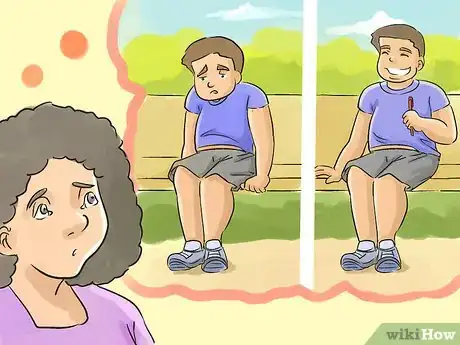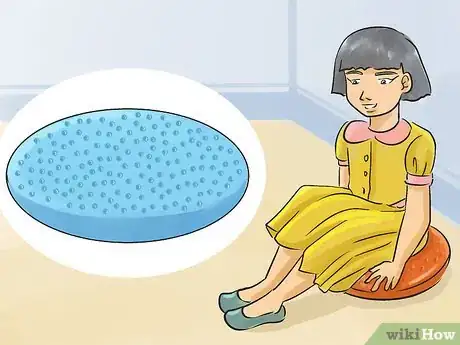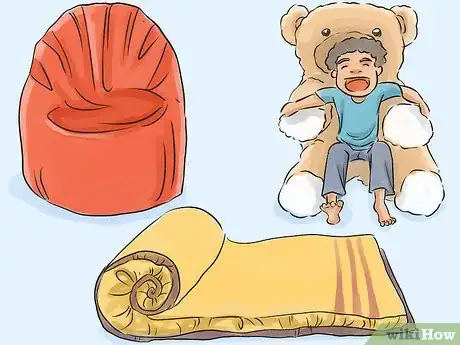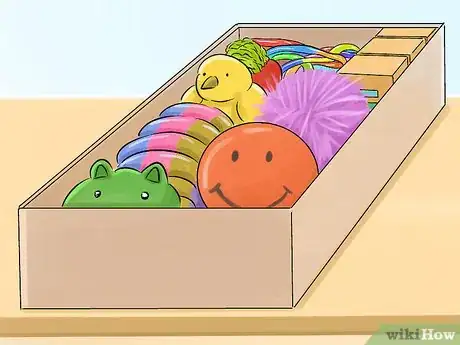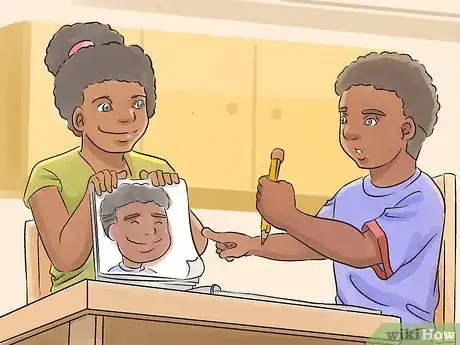X
wikiHow is a “wiki,” similar to Wikipedia, which means that many of our articles are co-written by multiple authors. To create this article, 14 people, some anonymous, worked to edit and improve it over time.
This article has been viewed 49,051 times.
Learn more...
Sitting in a chair can be an uncomfortable experience for an autistic child. Here is how to help them feel comfortable and willing to sit.
Steps
-
1Make your goal comfort, not sitting still. Autistic children usually need more sensory input than the average child, so a bit of fidgeting is natural to keep them comfortable. Try different things so that the child is happy to sit in the chair, and that their fidgeting does not interfere with their concentration.
- Talk to them about "sitting calmly": sitting in the chair, fidgeting as needed, and being able to focus.
- If they can't "sit calmly", then they need a way to get more sensory input. Teach them to recognize this, and ask for a break to stim or move around. Learning to ask for a break is an important skill for autistic children.[1]
-
2Give the child plenty of exercise during other parts of the day. Exercise provides an outlet for excess energy and improves mood (among other benefits). Try to incorporate time outdoors into the child's daily routine. This way, they won't need to fidget constantly.[2]Advertisement
-
3Try a sensory seat wedge. Seat wedges provide extra sensory input, reducing the need to fidget and wiggle.[3] Explain to the child that the wedge is like a cushion, and will help them sit calmly.
- Sit on the wedge to demonstrate that it is comfortable and safe.
- Seat wedges may come with tactile bumps. Explain how they can run their fingers along the bumps.
-
4Try a beanbag, or a weighted toy or blanket. These provide deep pressure, which helps them feel grounded. They can also gently fidget by feeling the fabric and beads inside it.
-
5Consider letting them sit on an exercise ball sometimes. They can bounce on it slightly while still concentrating on what's in front of them, and it provides an outlet for excess energy. Additionally, it can help with balance problems (something many autistic children struggle with).[4]
-
6Provide some basic stim toys. Mild to moderate stimming can improve focus (in neurotypicals as well as autistic people). Try giving the child a stress ball, a tangle, a tiny beanbag, or something they can manipulate in one hand while their other hand works on the task before them.
- Experiment with different stim toys and find out what the child likes best.
- Get a bin of different stim toys. Before the child goes to sit down, ask them to run to the bin and pick out a stim toy to use at their chair.
-
7Do fun things together while experimenting with different ideas. Try playing board games on the table, drawing pictures together, or reading a fun story. Let the child take breaks to jump around and stim if needed. This will help them learn that sitting can be enjoyable.
Advertisement
Warnings
- Never force an upset child to sit in a chair against their will. Let them take a break, stim, and calm down.⧼thumbs_response⧽
Advertisement
References
- ↑ https://journals.sagepub.com/doi/abs/10.1177/1088357610376945
- ↑ https://www.autismeducates.com/2018/04/25/top-5-ways-help-child-autism-focus-attention/
- ↑ https://www.brighthubeducation.com/special-ed-behavioral-disorders/64952-adaptive-seating-to-improve-the-concentration-of-students-with-add/
- ↑ https://www.ncbi.nlm.nih.gov/pubmed/21218680
- ↑ https://journals.sagepub.com/doi/abs/10.1177/1088357610376945
About This Article
Advertisement
